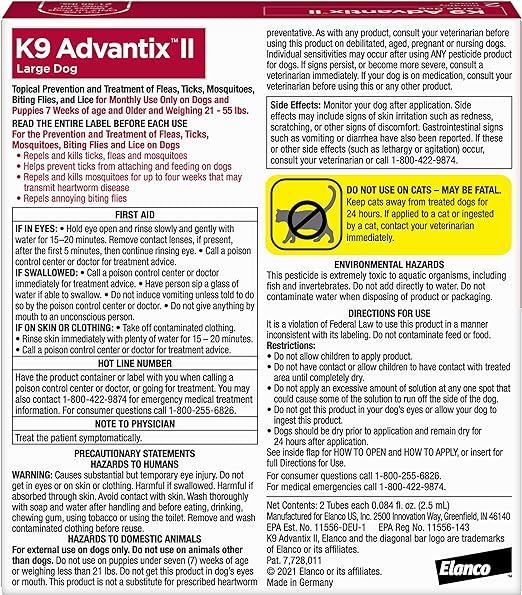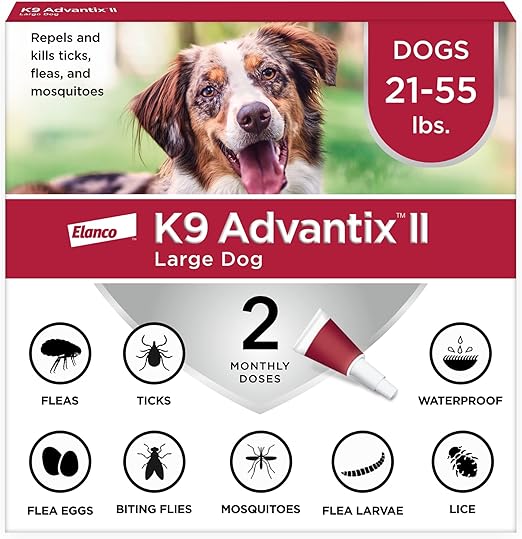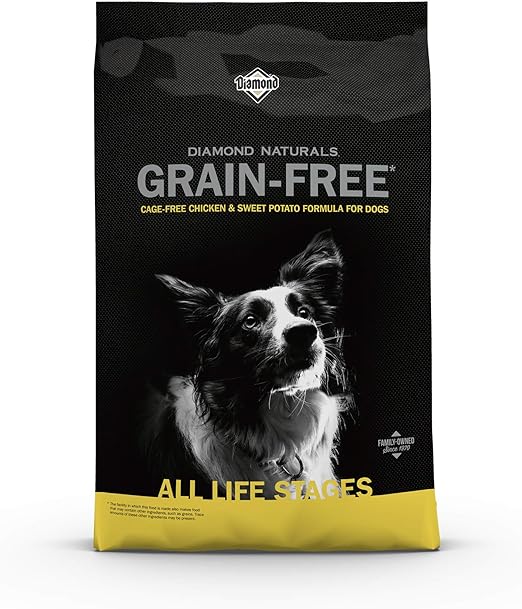As your furry friend’s biggest supporter, keeping fleas and other pests off Fido is a top priority. You know that dogs scratching themselves raw leads to misery all around. The path to pest-free puppy bliss starts with learning the best defense: fast-acting and convenient monthly treatments. K9 Advantix II Large Dog stops existing flea infestations and prevents new ones from taking hold on your pup. Simply apply the topical formula each month, and let it get to work killing fleas and ticks on contact within 12 hours so they never have to bite to die. That means no itching, scratching or transmitting nasty diseases. Now your dog can focus on more important things – like buttering you up for extra treats! You’ll both rest easy knowing K9 Advantix II keeps five major pests at bay while being gentle on sensitive doggy skin. flea treatment for dogs

The Importance of Flea Prevention and Treatment
As a responsible dog owner, one of your top priorities should be protecting your pup from fleas. Fleas are more than just a nuisance—they can cause severe discomfort, skin problems, and even transmit diseases. The key to keeping your dog flea-free is being proactive with prevention and treatment.
Monthly topical flea prevention, like K9 Advantix II, is the best way to stop an infestation before it starts. These treatments contain pesticides that kill fleas on contact and prevent them from laying eggs. Apply the treatment as directed, usually once a month during peak flea season. These topical spot-on treatments are very effective and convenient, with no pills to give.
If your dog already has fleas, you’ll need to treat them right away. Start by giving your dog a flea bath using a medicated shampoo and thoroughly combing through their coat with a flea comb to remove as many fleas and eggs as possible. Then apply a topical flea treatment like K9 Advantix II, which will kill any remaining fleas and prevent re-infestation. You should also treat your yard and home to remove any fleas in the environment.
Flea infestations can lead to other problems like tapeworms, flea allergy dermatitis (skin irritation), and anemia from blood loss. Tapeworms are transmitted by fleas and can rob your dog of important nutrients. Flea allergy dermatitis causes severe itching and hair loss. Anemia results in lethargy, pale gums, and weakness. By preventing fleas, you avoid these secondary issues and keep your dog healthy and comfortable.
Keeping your dog on a monthly topical flea prevention treatment, frequently checking for any signs of fleas, and treating quickly if an infestation occurs – these proactive measures will help ensure your beloved pooch stays happy, healthy, and pest-free. Your dog depends on you to protect them, so make flea prevention a top priority. With consistent care and the right products, you can win the battle against those pesky parasites. flea treatment for dogs

Types of Flea Treatments for Dogs: Topicals, Orals, Shampoos
There are several common types of flea treatments for dogs: topical spot-on treatments, oral medications, and shampoos. Each has its pros and cons, so you’ll need to determine what is most suitable and effective for your dog’s needs.
Topical Spot-On Treatments
Spot-on topical treatments, like Frontline Plus and K9 Advantix II, are applied directly to your dog’s skin, usually at the base of the neck. These monthly treatments kill adult fleas and their larvae, as well as repelling ticks and mosquitoes. Popular and effective, topicals are convenient but may irritate some dogs’ skin. They are also prone to washing off if your dog goes swimming.
Flea Shampoos and Dips
Flea shampoos and dips provide immediate relief by killing the fleas currently on your dog. However, they only protect for a short time after the bath and do not prevent re-infestation. Shampoos alone are not an effective long-term solution but can supplement other treatments. They may also dry out your dog’s skin if used too frequently.
In the end, the most effective approach is often a combination of preventative measures. Consult your vet to determine a comprehensive plan that incorporates home cleaning, yard treatment, and the right flea medication for your dog based on health, age, size, and lifestyle. With diligent use of recommended products, you’ll get those pesky fleas under control and keep your dog comfortable and itch-free.

How to Choose the Right Flea Treatment for Your Dog
The key to choosing an effective flea treatment for your dog is considering his lifestyle, age, and any medical conditions. For most dogs, a monthly topical treatment or oral medication is ideal for preventing an infestation before it starts.
Topical Treatments
Topical treatments, like K9 Advantix II, are applied directly to your dog’s coat, typically between the shoulder blades. These are very effective and convenient but may not be suitable for dogs that swim frequently or live in very humid climates, as they can wash off. Topicals kill adult fleas, larvae, and eggs to provide full protection. Popular options include Frontline, Advantage II, and Revolution.
Oral
Oral flea pills, such as NexGard and Comfortis, are given monthly and spread through your dog’s bloodstream to kill fleas. These are good for dogs that swim or get bathed often. However, some dogs don’t like taking pills and may spit them out. Oral meds only kill adult fleas, so eggs and larvae will not be affected.
Natural Treatments
For dogs with sensitive skin or medical issues, natural flea treatments using essential oils may be an option. These include brewer’s yeast, garlic, eucalyptus, lavender, and citronella. However, natural remedies typically require more frequent application and may not eliminate an existing infestation. They can also interact with medications, so check with your vet first.
Age and Medical Considerations
Very young puppies, typically under 8 weeks, cannot use most flea treatments until they reach a minimum age and weight. For dogs with chronic illnesses or on long-term medications, consult your vet on which options are safest and will not interact with their condition or drugs. In some cases, flea treatments may need to be avoided altogether.
By evaluating your dog’s lifestyle and needs, you can choose a flea treatment that will keep your faithful friend comfortable and itch-free. With the right prevention and care, you’ll both be resting easy without those pesky parasites disturbing your peace.
When to Apply Flea Treatments for Dogs
When it comes to flea prevention for your dog, timing is everything. To stop an infestation before it starts, you’ll want to apply a flea treatment in the early spring, around March or April in most areas. This helps kill any fleas that may have hitched a ride on your dog over the winter, preventing them from multiplying into a full-blown infestation.
For ongoing prevention throughout the warmer months, reapply a flea treatment once a month or every 3-4 weeks as directed. Flea and tick treatments often come in easy-to-use topical drops, oral tablets, or collars that provide protection for a set period of time before needing to be reapplied. Be sure to stick closely to the reapplication schedule to keep your dog fully protected.
In the fall, continue monthly flea treatments until the first hard frost in your area, usually around October or November. The cold weather will kill off any remaining fleas, so you can stop treatments for the winter. However, be on the lookout for any signs of fleas when temperatures rise again in early spring and resume a prevention schedule.
It’s also a good idea to treat your yard and home to eliminate fleas in the environment. Use a pet-safe spray, powder or granules and reapply as directed. Vacuum frequently, especially under furniture, to pick up any flea eggs. Wash your dog’s bedding weekly in hot, soapy water to kill any fleas and larvae.
Following a comprehensive flea prevention plan for your dog and home will help stop infestations before they start and allow your pup to avoid the discomfort of flea bites and the diseases they may carry. Be sure to talk to your vet about safe and effective flea treatment options for your dog’s needs. Consistency and vigilance are key to keeping your furry friend flea-free and comfortable all year long.
Flea Treatment FAQs: Answering Common Questions About Flea Control
Fleas are more than just a nuisance – they can pose health risks to your dog and be difficult to get rid of once an infestation starts. The key is prevention through regular flea treatment. You likely have some questions about the options and process, so here are answers to frequently asked questions about flea control.
What are the different types of flea treatments?
There are several types of flea treatments available for dogs:
- Topical spot-on treatments: Applied to the skin on the back of the neck, these formulas spread over the skin surface. Popular brands include Frontline, Advantage, and K9 Advantix.
- Oral pills or chewables: Flea pills, such as Capstar and Simparica, are given by mouth either daily or monthly.
- Sprays: Flea sprays can be applied directly to the dog’s coat to kill and repel fleas. These tend to require more frequent application.
- Shampoos and dips: Flea shampoos and dips are used during bathing to kill fleas currently on the dog. They typically only provide temporary relief.
- Collars: Flea collars release insecticide over time to kill and repel fleas. They must be worn continuously to be effective. flea treatment for dogs
When should I start flea treatment?
It’s best to begin flea treatment in the early spring, before the weather starts warming up and fleas become active again. This helps ensure your dog is protected before fleas have a chance to get on them. Monthly spot-on or oral flea treatments should be given year-round for the best protection. Even in winter, fleas can survive in homes and on pets, so year-round prevention is key. flea treatment for dogs
How often do I need to apply flea treatment?
The frequency of application depends on the specific product you use. Monthly spot-on treatments, pills, and collars need to be reapplied every 4 weeks. Shampoos typically only last around 1 week, so bathing weekly may be needed. It’s important to follow the directions for your particular flea treatment to ensure it remains effective. Missing or skipping doses can allow fleas to get established, requiring additional treatments to eliminate the infestation. flea treatment for dogs
Conclusion
So go give your dog a good scratch behind those floppy ears – he’s earned some extra affection after braving the seasonal battle against pests. Now that you know how to keep fleas and ticks at bay, you can focus on more important things, like playing fetch and going on long walks. Your furry pal will thank you for taking good care of him. Just remember to stay on top of monthly treatments, and you’ll both continue living the itch-free dream all year long. flea treatment for dogs




